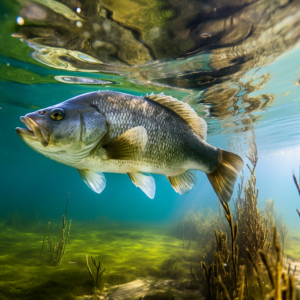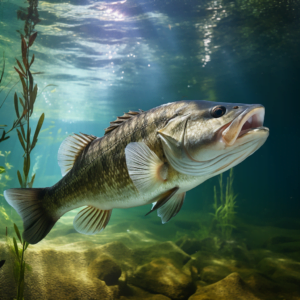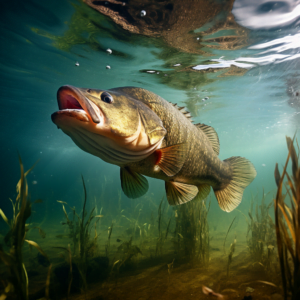Largemouth bass are one of the most popular freshwater sportfish in North America. However, outside of their native range, these voracious predators have become harmful invasive species that can severely disrupt local ecosystems. In this in-depth article, we’ll explore what makes largemouth bass such effective invaders, how they were introduced around the world, their substantial impacts on native wildlife, and ongoing efforts to manage their spread.
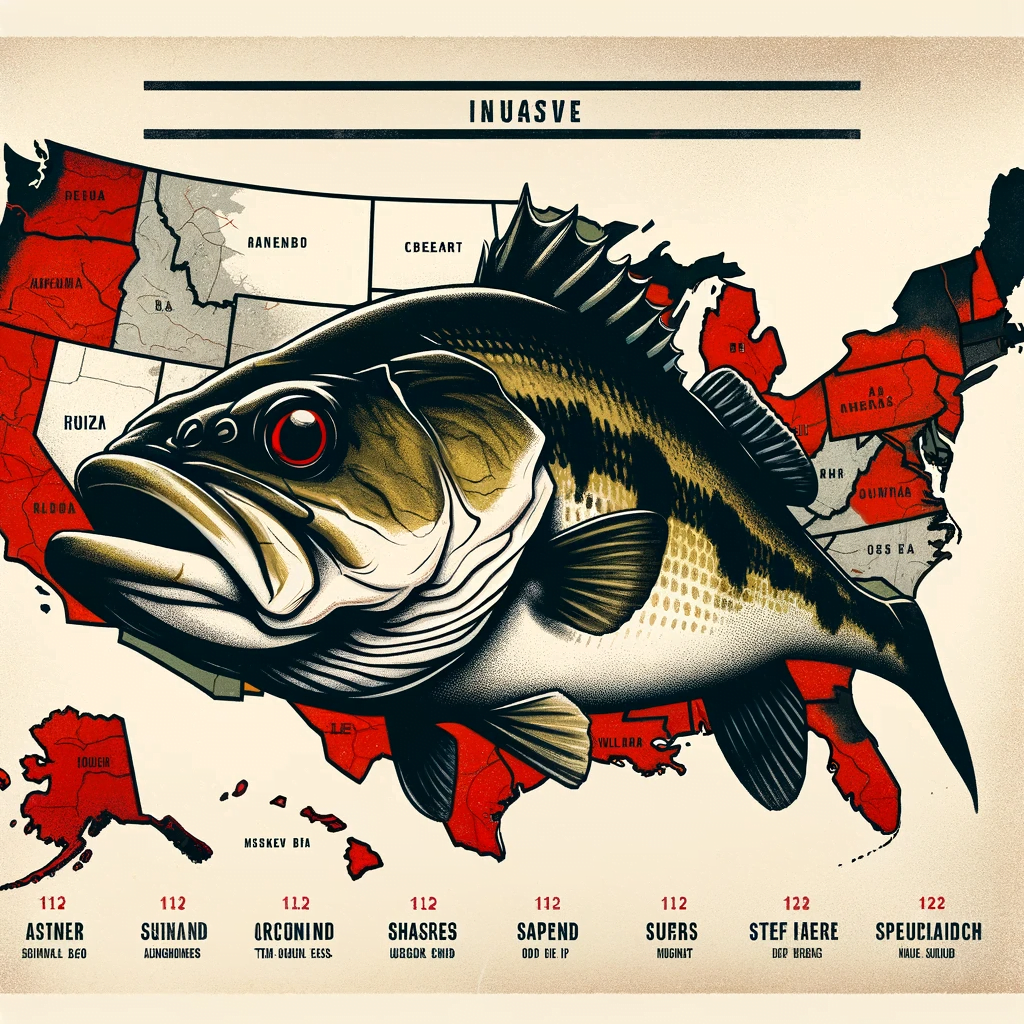
An Introduction to the Largemouth Bass
The largemouth bass (Micropterus salmoides) is a large, predatory freshwater fish belonging to the sunfish family (Centrarchidae). Native to eastern central North America, they inhabit lakes, ponds, reservoirs, rivers, and backwaters. They have been widely introduced worldwide due to their popularity among recreational anglers and value as a game fish.
Some key facts about the biology and ecology of largemouth bass:
- Large predatory fish, adults typically reach 10-20 inches in length and 2-5 lbs in weight. The world record is 22 lbs 4 oz.
- Distinguished by a large, elongate mouth extending behind the rear edge of the eyes.
- Prefers warm, shallow, weedy waters and lakes with abundant structure.
- Opportunistic ambush predators that eat fish, crayfish, frogs, snakes, salamanders, small mammals, insects and more.
- Use camouflage and cover to surprise prey. Can expand jaws to swallow very large prey.
- Spawn in the late spring and summer when mature males create nests in shallow water or protected areas to attract females.
- Females lay 2,000-43,000 eggs per spawn that hatch in 2-6 days. Males guard the nests until fry disperse.
- Fry initially school together, feeding on zooplankton. Grow rapidly, often reaching 6-8 inches by late fall.
- Sexually mature by 2-3 years of age. Average lifespan is 10-16 years.
Largemouth bass thrive in warm, productive lakes and backwaters with abundant vegetation and structure. Their flexible, opportunistic feeding gives them a key ecological role as apex predators that structure fish communities.
Biological Traits That Enable Invasive Success
A number of key biological characteristics contribute to the largemouth bass’s success as an invasive species when introduced outside of its native range:
Voracious, Opportunistic Predators
Largemouth bass are sit-and-wait predators that will consume any prey they can capture and swallow whole. A diverse generalist diet gives them an advantage in new ecosystems.
- Will eat any fish, amphibian, reptile, or invertebrate they can capture and fit in their large mouths.
- Consume eggs and juveniles of native fish and amphibians, limiting reproduction.
- Alter local food webs by selectively reducing populations of prey species.
- Foraging flexibility allows exploiting new prey items they encounter.
Rapid Growth and High Reproductive Output
Largemouth bass mature early and have a high reproductive rate, fueling population growth.
- Fast juvenile growth enables bass to quickly outcompete native predators.
- Mature as early as 2 years old. Each female can spawn up to 9 times in a season.
- Females lay 2,000-43,000 eggs per spawn, with a high survival rate.
- Results in exponential population growth and range expansion.
Tolerant of Diverse Environments
Largemouth bass thrive across a wide range of warmwater habitats.
- Persist in water temperatures from 0 – 38°C, dissolved oxygen levels as low as 1 ppm.
- Tolerate turbid, nutrient rich, polluted and brackish waters.
- Able to colonize reservoirs, irrigation canals and other artificial water bodies.
- Generalist requirements enables invasion across diverse regions.
Aggressive Behavior
Largemouth bass aggressively defend territories from other species.
- Viciously guard spawning nests from potential competitors and predators.
- Establish dominance over optimal habitat, excluding native species.
- Persistently chase other fish from prime hunting and foraging areas.
A History of Invasive Introductions
Largemouth bass have been widely introduced around the world since the late 1800s through authorized stocking programs, illegal releases, escapes from aquaculture facilities, and natural dispersal through connected waterways:
Intentional Stocking
Government agencies, private groups, and individuals have intentionally stocked non-native largemouth bass for over 130 years to establish recreational fisheries.
- Starting in the late 1800s, bass transported from North America to countries globally to create new fisheries.
- Continued illegal stocking by anglers seeking to enhance local fishing opportunities.
- Often introduced without fully considering long-term impacts.
Accidental Releases from Aquaculture
Largemouth bass are farmed commercially for food and stocking. Escapes have enabled invasive spread.
- Bass farms supply fish for stocking and human consumption. A $100+ million industry in the U.S.
- Storms and flooding damage farm enclosures, enabling largemouth bass to escape into natural waters.
- Florida’s frequent hurricanes have caused multiple escapes establishing invasive populations.
Dispersal Through Connected Waterways
Natural and artificial water connections have enabled largemouth bass to expand their invasive ranges.
- Rivers, streams, irrigation canals and reservoirs form connected networks.
- Allows rapid dispersal and genetic exchange once established in a watershed.
- Humans modify landscapes by constructing new waterways and hydrologic links.
Some major examples of largemouth bass introductions include:
- Introduced to many European countries starting in the late 1800s and continue spreading today.
- First imported to Japan in 1925. Widespread invasive impacts documented in lakes and rivers by the 1970s.
- Illegally introduced to Papua New Guinea in the 1950s where populations are now abundant.
- Escaped from flooded fish farms after hurricanes in Florida and rapidly colonized downstream waters.
The Damaging Invasive Impacts
Where introduced outside of their native range, largemouth bass can have severe negative impacts on native freshwater plants and animals. Some of the major ecological impacts include:
Predation on Native Wildlife
Largemouth bass are voracious predators that directly consume juvenile fish, amphibians, and invertebrates.
- Consume eggs and larvae of native fish species, limiting their reproduction.
- Shown to drastically reduce populations of endangered native fish and amphibians.
- A single bass can consume thousands of zooplankton daily, impacting food chains.
- Foraging stresses native wildlife, reducing growth and fitness.
Outcompeting Native Species
Largemouth bass aggressively compete with native fish for food, habitat, and other resources.
- Displace native predatory fish from prime habitat through antagonistic behavior.
- Dominate optimal feeding locations, reducing native fish access to prey.
- Juveniles opportunistically compete with young of native species for food.
Altering Ecosystems
The presence of invasive largemouth bass fundamentally alters habitat conditions, food webs, and ecosystem functions.
- Selective predation restructures aquatic food chains and nutrient cycles.
- Nests built for spawning disrupt aquatic vegetation.
- Introduction of non-native pathogens and parasites.
- Hybridization with native bass species degrades the gene pool.
Devastating Native Fisheries
The economic, cultural, and recreational value of native fisheries is degraded.
- Complete displacement of endemic fish reduces recreational opportunities.
- Threatens subsistence fishing communities dependent on native fish species.
- Diminished tourism revenue where unique native fish driven to extinction.
Examples of Severe Invasive Impacts
- Caused extinction of 7 native fish in Lake Catemaco, Mexico and extirpation of fish in Lake Chapala.
- Reduced populations of endangered dwarf galaxias in New Zealand streams by 82%.
- Hybridization with smallmouth bass in South Africa reduced genetic diversity by 60%.
- Economic losses up to $500 million annually in some states from impacts to native fisheries.
Clearly, introduction of largemouth bass outside their natural range can have devastating ecological, economic, and social consequences.
Strategies For Managing Invasive Largemouth Bass
Once established, invasive populations of largemouth bass are extremely difficult to fully eradicate. However, given their severe impacts, controlling bass invasions is an important management goal. Strategies include:
Policy and Legislation
Government regulations restricting largemouth bass introductions and transportation are critical management tools.
- Banning imports and unauthorized stocking of bass in vulnerable areas.
- Requiring escape prevention and containment protocols for aquaculture facilities.
- Prohibiting movement of bass between connected water bodies.
- Mandatory screening and quarantine for bass imported for aquaculture.
Public Education
Informing recreational anglers, pond owners, and aquaculturists about the impacts of illegal bass introductions is key.
- Teaching proper catch and release practices to avoid accidental transportation of bass.
- Encouraging responsible practices when stocking private ponds.
- Labels at fishing and bait shops advising against unauthorized introductions.
Selective Fisheries Management
Promoting bass fishing tourism combined with limits on take can reduce populations.
- Special bass fishing tournaments and seasons focused on vulnerable waters.
- Limits on size and number of bass that can be harvested.
- Slot limits requiring release of trophy-sized bass.
Habitat Alteration
Modifying aquatic environments can reduce largemouth bass survival and reproduction.
- Aquatic weed control through mechanical harvesting or herbicides.
- Draining reservoirs during bass spawning season.
- Lowering water levels to increase predation on bass nests.
Biological Control
Introducing bass-specific diseases or predators shows some potential for control.
- Experimental infection with salmincola parasite reduced bass populations in New Zealand.
- Stocking largemouth bass virus (LMBV) to increase juvenile mortality.
- Possible use of native predators like alligators or water snakes that preferentially eat invasive bass.
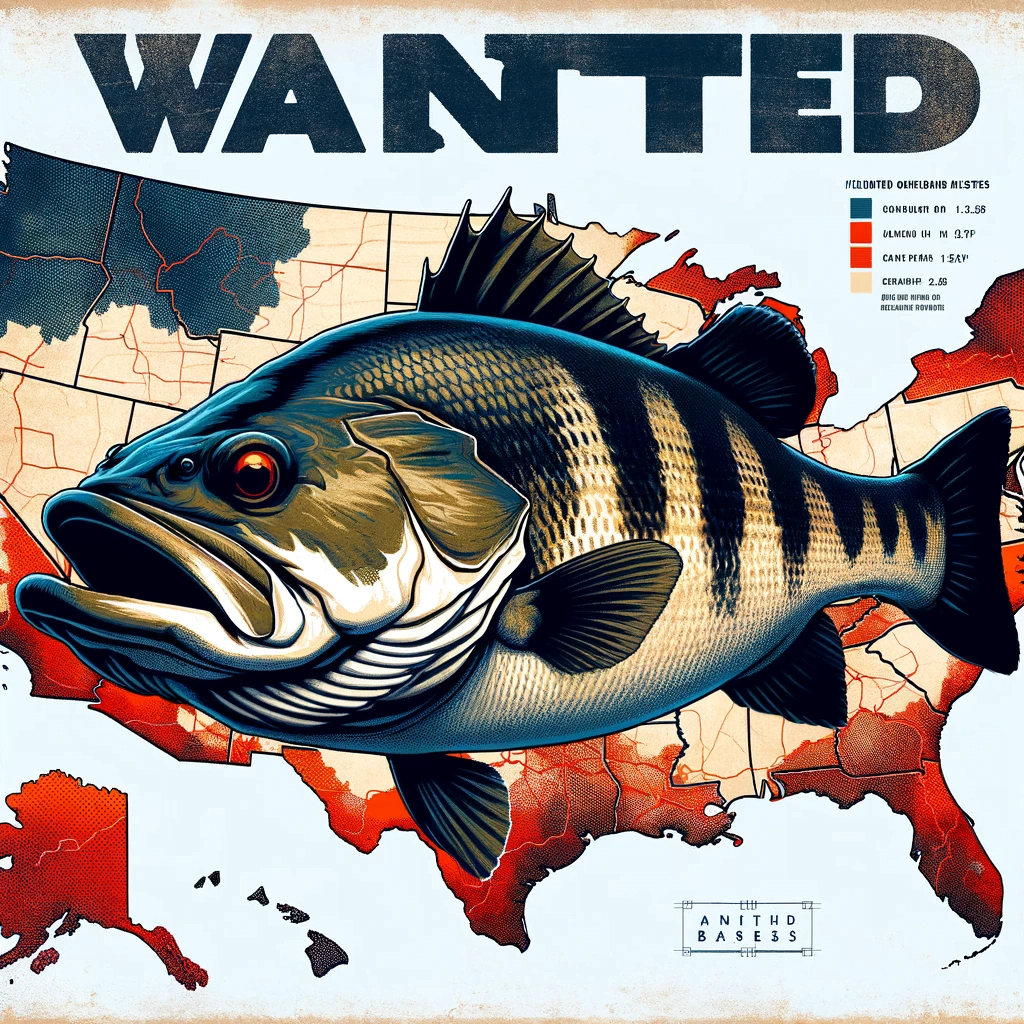
Eradication Techniques
Complete elimination of invasive bass is rare but sometimes possible in small water bodies.
- Application of biocides like antimycin or rotenone to selectively kill bass.
- Electrofishing to remove all adult bass before spawning.
- Draining small ponds to completely eliminate the population.
Integrated Management
A combination of methods tailored to the specific environment generally works best.
Looking to the Future
Introduced largemouth bass provide significant recreational fishing opportunities but also have the potential to severely disrupt freshwater ecosystems they invade. Through public education, enforcing legislation, promoting responsible practices, and continued research into control techniques, the harm caused by their introductions can hopefully be reduced. However, preventing irresponsible introduction and dispersal is the most effective long-term strategy for protecting global freshwater biodiversity.

